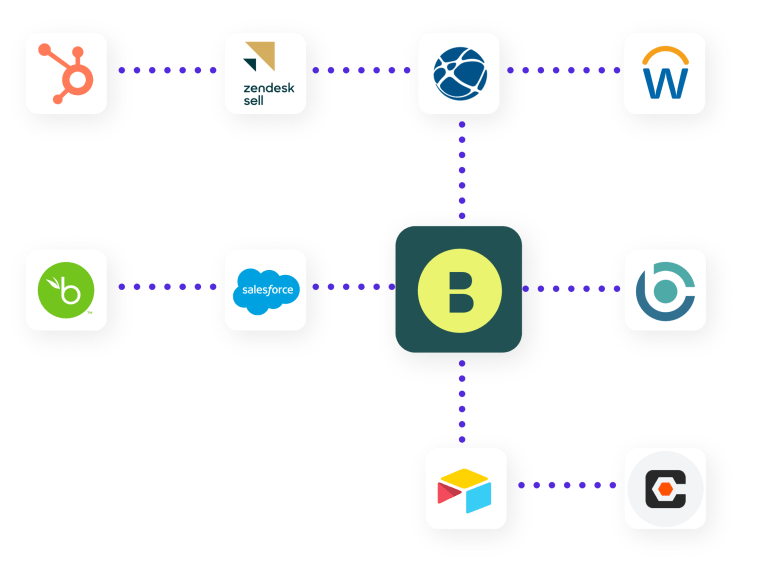While artificial intelligence is certainly changing construction, the industry remains very labor-driven. Workers aren’t lines of code that can be infinitely duplicated and run; workforce scheduling is very important. Keep reading as we discuss workforce scheduling and how you can do it efficiently.
Table of Contents
What is workforce scheduling in construction?
In construction, workforce scheduling coordinates employees to ensure projects are completed on time, within budget, and to the client’s satisfaction. Efficient scheduling is a requirement to ensuring you consider industry challenges like widespread labor shortages. According to recent research, there is a shortfall of nearly 500,000 workers needed to meet construction demand in 2025 alone.
This is a major part of construction workforce management. However, it focuses on a company’s day-to-day operations, whereas other workforce management strategies address long-term staffing and human capital planning concerns.
Professionals involved in the workforce scheduling process consider several factors, including workload projections and existing resource allocations.
Workforce management scheduling objectives
Here are the goals any workforce management scheduling plan should achieve.
OPTIMIZING LABOR COSTS
Labor is among the highest costs construction companies incur. A good workforce management scheduling process avoids wasting money in this department by minimizing issues such as:
- workers sitting idle on job sites
- high turnover rates
- unproductivity
- time theft
- buddy punching
- excessive overtime
MAINTAINING QUALITY
Effective construction workforce scheduling can help you ensure quality by appropriately grouping employees and allocating them based on skills and the project’s needs. This prevents you from scrambling and filling positions on your lineup with whoever’s available, regardless of their suitability for the project.
KEEPING YOUR WORKFORCE FLEXIBLE
Making scheduling changes on the fly is tough without an effective strategy. Experienced workforce schedulers use various tools (including software – more on this shortly) to keep track of all workers and their current allocations. Consequently, they can spot at a moment’s notice which employees can be reshuffled if the need arises.
KEEPING WORKERS HAPPY
While workforce scheduling addresses different concerns than long-term human capital planning, professionals overseeing either discipline don’t operate in silos. On the contrary, poor workforce management scheduling can cause burnout and increase a company’s turnover rate.
This is especially damaging in construction, where a company’s workforce capacity can mean the difference between winning or losing bids. A good worker lost by you can become a good worker gained by one of your local competitors, making that rival firm the beneficiary of all the investments (i.e., training) you’ve made.
It’s not just about avoiding overworking your employees, either. You should also strive to ensure they’re allocated to projects that benefit their career trajectories. This is especially important for younger generations who place career progression at the top of their priority list. The labor market is changing, too, with estimates that 41% of the construction workforce will retire by 2031. Retaining and recruiting staff entering the workforce is a key imperative of workforce scheduling.
Workforce management scheduling process
Next, let’s explore the steps involved in workforce scheduling. Remember, this isn’t something you do once, even on individual projects. Construction management professionals often need to reevaluate their scheduling decisions as a project progresses.
1. EVALUATE YOUR LABOR NEEDS
Start by developing a clear picture of your company’s current projects and their associated workforce needs. Remember, workers aren’t fungible. Each employee brings different skills to the table, making them better suited to some projects than others.
Consequently, good workforce schedulers consider the unique skills required for each project and allocate employees accordingly.
2. EVALUATE YOUR CURRENT WORKFORCE’S CAPACITY AND ALLOCATIONS
Consider how your current workforce allocations correspond with your labor needs in this next step. Do you have enough workers? Are they allocated appropriately?
You should also look at worker performance trends. For example, are certain workers habitually slow or absent? On the positive side, do particular workers display proficiencies that would make them ideal for specific projects? Are they being allocated accordingly?
3. BEGIN SCHEDULING YOUR WORKFORCE BASED ON THE DATA YOU’VE OBTAINED
In the previous two steps, you collected data and observations that should inform your workforce scheduling going forward. That’s the purpose of this step, which should entail allocating workers to the correct projects based on your data.
4. MAKE SURE YOUR SCHEDULE IS EASILY-ACCESSIBLE
A good workforce schedule should function as a single source of truth. Consequently, it’s imperative that you keep it accessible within your organization. This is much easier with cloud-based scheduling software, which we’ll explore next.
What Are the Most Common Work Schedules in Construction?
Construction projects demand precision, efficiency, and careful coordination, which makes choosing the right scheduling method crucial. Each method has its own strengths and weaknesses, tailored to specific project types and team dynamics. Below, we break down the most common construction work schedules used in the industry.
- Line of Balance
- Quantitative Scheduling
- Program Evaluation and Review Technique (PERT)
- Resource-Oriented Scheduling
- Gantt Charts
- Last Planner System (LPS)
- Critical Path Method (CPM)
Line of Balance
The Line of Balance method organizes repetitive tasks like those found in high-rise construction or infrastructure projects. By visualizing task timelines and locations, it allows teams to maintain a steady workflow. However, this method is best suited to projects with clear repetition and may not adequately handle non-repetitive activities or offer insight into the project’s critical path.
Quantitative Scheduling
Quantitative scheduling focuses on tracking resource quantities over time, tying tasks to expenses for meticulous cost control. It’s ideal for projects with variable resources but becomes cumbersome for highly repetitive tasks or teams unfamiliar with its methodology. This method shines when granular financial management and resource allocation are priorities.
Program Evaluation and Review Technique (PERT)
PERT is a milestone-focused scheduling method that encourages collaboration, particularly on complex projects. It incorporates optimistic, pessimistic, and expected completion times to map out a clear project trajectory. While excellent for defining key deadlines, PERT struggles with resource-sharing scenarios and becomes unwieldy with intricate task networks.
Resource-Oriented Scheduling
Prioritizing resource allocation, this method is critical for projects where limited resources like cranes or specialized equipment must be shared efficiently. Though effective for managing high-demand assets, it can become overly complex when juggling multiple resources across various activities.
Gantt Charts
Known for their simplicity, Gantt charts are a popular choice for visualizing project schedules. They clearly display task durations and dependencies, facilitating easy adjustment for overlapping activities. However, they can become cluttered on large projects, lacking details about resource requirements.
Last Planner System (LPS)
The LPS increases scheduling detail as deadlines approach, fostering team collaboration through pull-plan sessions. This method thrives in environments with strong communication and coordination but highlights weaknesses in team cohesion when collaboration falters.
Critical Path Method (CPM)
CPM is a staple in construction scheduling, identifying the sequence of critical tasks essential to timely project completion. While invaluable for focusing efforts on pivotal activities, CPM often requires supplementation in projects with intricate task interdependencies or extensive resource requirements.
What Is the Role of a Workforce Scheduler?
In construction, the role of a workforce scheduler is pivotal to keeping projects running smoothly and on target. You act as the mastermind behind the scenes, ensuring workers are allocated to the right tasks at the right time to meet project goals. By crafting detailed schedules, estimating labor needs, and managing timelines, you become the bridge between planning and execution. Collaborating with project managers, engineers, and team leaders, you track progress, spot potential delays, and make adjustments to keep everything on course. Your efforts don’t just shape a schedule; they build the backbone of the entire operation.
As a workforce scheduler, you also face the challenge of juggling priorities and adapting to ever-changing project demands. It’s not just about assigning names to tasks; you’re constantly recalibrating to optimize labor use, reduce downtime, and ensure productivity stays high. You’ve got to think on your feet, reshuffling resources when surprises hit while keeping the bigger picture in focus. By creating accessible schedules and facilitating clear communication, you help every team member stay informed and aligned, cutting through confusion and keeping operations seamless.
Your impact goes beyond numbers and timelines. You’re a key player in ensuring safety standards, compliance, and budget management are all upheld. With every decision, you balance the needs of the project with the well-being of the team, making sure no detail is overlooked. By stepping into this role, you become the glue that holds the workforce together, turning complex challenges into opportunities for success. It’s not just a job—it’s a critical piece of the construction puzzle that drives progress forward.
Why workforce scheduling software is important
Any construction management professional knows how fluid the workload can be, especially in companies that manage multiple projects simultaneously. While we as humans bring many unique skills to the construction industry, computers will always be better at tracking large amounts of data (namely, in this case, individual workers and their availability).
Manual, repetitive tasks represent a serious time sink. It’s estimated that staff spend at least a quarter of their work week on such tasks, such as email, data collection, and data entry. The same research also noted that nearly 60% of workers believed they could save six or more hours a week if certain tasks were automated.
That’s where workforce scheduling software comes in. This is our area of expertise at Brigit Solutions. We’re the company behind Bridgit Bench, an acclaimed workforce scheduling software that helps general contractors and subcontractors alike allocate workers efficiently.
With Bridgit Bench, you can:
- easily identify over and under-allocated team members
- track each employee’s professional development
- implement custom fields for each worker (i.e. conditions relevant to your company, such as willingness to relocate or acquire further certifications)
- analyze workforce data (including forecasting) in real-time
Request a demo of Bridgit Bench. We’ll show you how the software can help your business!
What are the key features to look for in workforce scheduling software for construction?
Next, let’s discuss the essential features of construction workforce management scheduling software. These relate directly to the aforementioned objectives of workforce scheduling.
SPECIALIZATION
Scheduling in the construction industry is its own beast. Few other industries require such attention to detail and logistical mastery. Consequently, the best construction workforce scheduling professionals use dedicated software like Bridgit Bench and Autodesk. We build our tools specifically for the construction industry based on the needs we hear from professionals.
FORECASTING
Looking miles down the road is an important part of workforce scheduling. Good software helps you spot trends in the data that wouldn’t necessarily be visible to the naked eye.
EASY ACCESS
Scheduling software is no good if it can’t be accessed from virtually anywhere – especially amid the ongoing pandemic. Look for cloud-based software that can be used on mobile and desktop devices.
SIMPLE REPORTING
Continually evaluating your workforce schedule is important. Good software makes this easy by offering reports in formats like PDF and CSV. Learn more about Bridgit Bench’s capabilities in this regard.
In construction, workforce scheduling is an important part of resource management. We hope this article has helped you understand the process and how to do it effectively. For more workforce management tips, visit our blog.
Construction Workforce Scheduling FAQ
What is the WFM process cycle?
The WFM (Workforce Management) process cycle includes planning, forecasting, scheduling, and managing employees. You can use this process to ensure you have the right number of workers in place to meet construction project demands efficiently.
What are the simple 5 steps to efficient workforce planning?
The five steps to efficient workforce planning are: 1) Evaluate labor needs, 2) Assess current workforce capacity, 3) Allocate workers based on data, 4) Make schedules accessible, and 5) Review and adjust schedules as needed.
What is the role of a workforce scheduler?
A workforce scheduler plays a key role in construction projects by taking steps to ensure employees and tradespeople are scheduled to work at the right time to meet project needs. They will help to manage worker assignments and share a schedule that is easy to access.
How can scheduling efficiency be improved?
You can improve scheduling efficiency using dedicated software, taking efforts to forecast project requirements accurately, and maintaining a flexible, accessible schedule. Don’t forget to regularly review and adjust the schedule to keep it up to date.
What is the key to successful workforce scheduling?
The key to successful workforce scheduling is balancing the project needs with available resources. This includes using data to make informed decisions and keeping the schedule flexible to handle changes.
Which software is used for construction scheduling?
Popular software used for construction scheduling includes Bridgit Bench, Microsoft Project, and Procore. These tools help in planning, scheduling, and managing construction projects efficiently.
What software do contractors use?
Contractors use a variety of software including Procore, Autodesk BIM 360, Bridgit Bench, and Buildertrend for project management, scheduling, and workforce management.
Which software is best for construction?
The best software for construction depends on specific needs, but commonly used ones are Procore for project management, Bridgit Bench for workforce management, and Autodesk BIM 360 for overall construction management.
Is WBS a scheduling tool?
A Work Breakdown Structure (WBS) is not a scheduling tool but a project management tool that helps in breaking down a project into manageable sections. It is used in conjunction with scheduling tools to organize tasks.
How to do construction scheduling?
Construction scheduling involves defining project tasks, estimating durations, assigning resources, and setting milestones. Software like Primavera P6 or Microsoft Project can be used to create detailed schedules and track progress.
Which software do you use for labor scheduling?
For labor scheduling, construction companies often use Bridgit Bench, ExakTime, and When I Work to manage workforce allocation, track time, and optimize labor efficiency.




